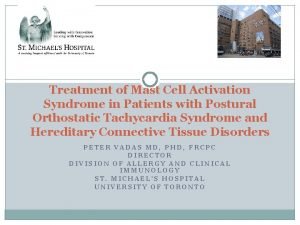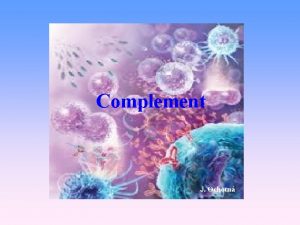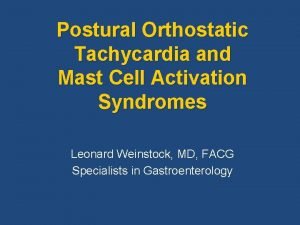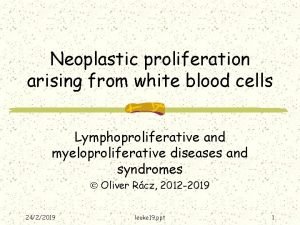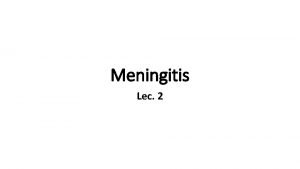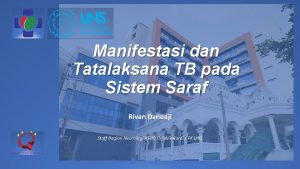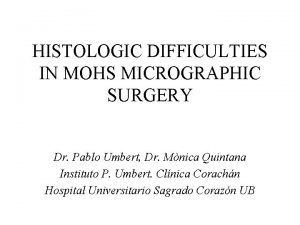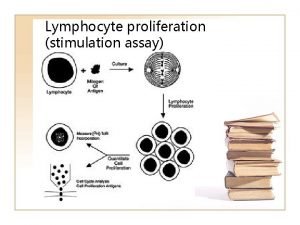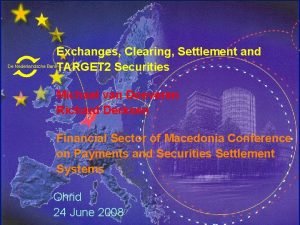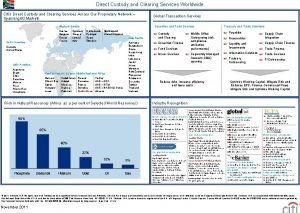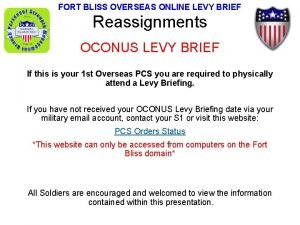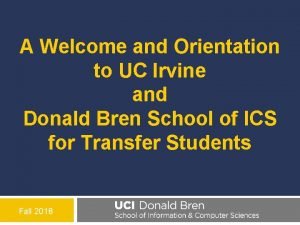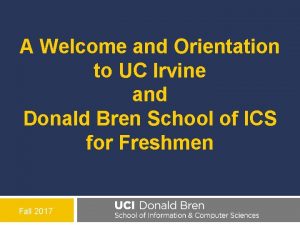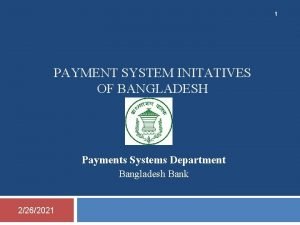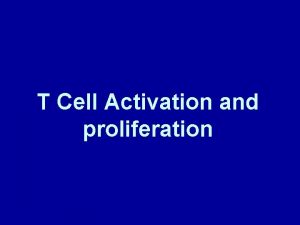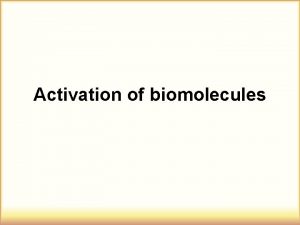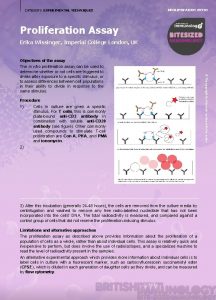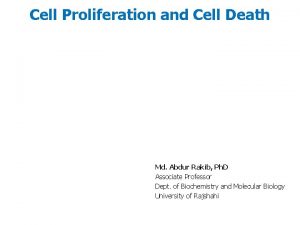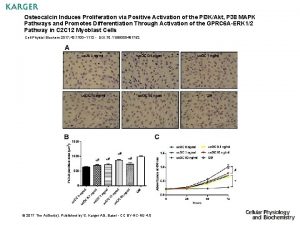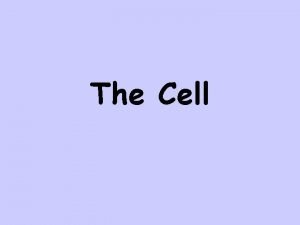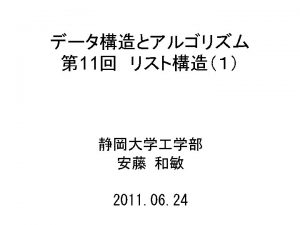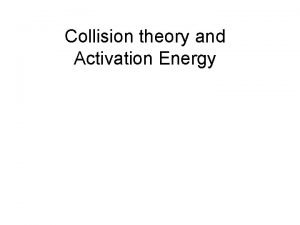T Cell Activation and proliferation Intercepting and Clearing




























- Slides: 28

T Cell Activation and proliferation


Intercepting and Clearing Out Antigen After engulfing antigen-bearing particles, dendritic cells or macrophages migrate to lymph nodes, where T cells bind and initiate responses During an infection, lymph nodes swell due to accumulation of T cells Antibody-antigen complexes bound by complement are cleared by the liver and spleen

The production of armed effector T cells In order to be activated, a naive T cell must recognize a foreign peptide bound to: a self MHC molecule. But this is not, on its own, sufficient for activation. That requires the simultaneous delivery of: a co-stimulatory signal by a specialized antigenpresenting cell.

Only dendritic cells, macrophages, and B cells are able to: express both classes of MHC molecule as well as the co-stimulatory cell-surface that drive the clonal expansion of naive T cells and their differentiation into: armed effector T cells. molecules

T Cell subsets


1. CD 4 activate B cell (Antibody-mediated immune response 2. Memory T cell (clonal selection) CD 8 Activted Cytotoxic T cell ( Cell-mediated immune response


The most potent activators of naive T cells are mature dendritic cells and these are thought to initiate most, perhaps all, T-cell responses in vivo. Immature dendritic cells in the tissues take up antigen at sites of infection and are activated to travel to local lymphoid tissue. Here they mature into cells that express high levels of co-stimulatory molecules and the adhesion molecules that mediate interactions with the naive T cells continually recirculating through these tissues.

The activation and clonal expansion of a naive T cell on initial encounter with antigen on the surface of an antigen-presenting cell is often called priming, to distinguish it from the responses of armed effector T cells to antigen on their target cells, and the responses of primed memory T cells.

They occur in the organized peripheral lymphoid tissues through which naive T cells are continually migrating. Pathogens are transported to lymphoid tissue in the lymph that drains the infected tissue. Pathogens infecting mucosal surfaces accumulate in lymphoid tissues such as the Peyer's patches of the gut or the tonsils;

Those that enter the blood are trapped in the spleen; while those infecting peripheral sites are trapped in the lymph nodes directly downstream of the site of infection All these lymphoid organs contain cells specialized for capturing antigen and presenting it to T cells. The most important of these are the dendritic cells, which capture antigen at the site of infection and then migrate to the downstream lymph node.

Naive T cells sample the MHC: peptide complexes on the surface of antigen-presenting cells as they migrate through peripheral lymphoid tissue Naive T cells enter lymphoid tissue by crossing the walls of specialized venules known as high endothelial venules (HEV). They circulate continuously from the bloodstream to the lymphoid organs and back to the blood, making contact with many thousands of antigen-presenting cells in the lymphoid tissues every day.

These contacts allow the sampling of MHC: peptide complexes on the surface of these antigen-presenting cells, which is important for two reasons: One is that it appears to reinforce the process of positive selection for self MHC recognition that occurred during T -cell development. T-cell receptors are selected for their ability to interact with self MHC: self peptide complexes during T-cell development. In this way, a repertoire of mature T cells is selected that can be activated by nonself peptides bound to the same MHC molecules.

MHCI & MHCII




Recent experiments show that T-cell survival in the periphery also depends on contact with self MHC: self peptide ligands, These signals required for survival are delivered effectively through interactions with MHC: peptide complexes on dendritic cells. Thus, as naive T cells migrate through peripheral lymphoid tissue, they receive survival signals through their interactions with dendritic cells. At the same time, the sampling of MHC: peptide ligands ensures that each T cell has a high probability of encountering antigens derived from pathogens at any site of infection.

This is crucial for the initiation of an adaptive immune response, as only one naive T cell in 104 -106 is likely to be specific for a particular antigen, and adaptive immunity depends on the activation and expansion of such rare antigen-specific T cells The T cells that do not encounter their antigen eventually reach the medulla of the lymph node, from where they are carried by the efferent lymphatics back to the blood to continue recirculating through other lymphoid organs. Naive T cells that recognize their antigen on the surface of a dendritic cell cease to migrate, and embark on the steps that generate armed effector cells. The generation of effector cells from a naive T cell takes several days. At the end of this period, the armed effector T cells leave the lymphoid organ and reenter the bloodstream to migrate to sites of infection.

The delivery of antigen from a site of infection to downstream lymphoid tissue and its subsequent presentation to naive T cells is actively aided by the innate immune response to infection. this is rapidly triggered at the site of infection by nonclonotypic receptors that recognize molecular patterns that are associated with pathogens but not host cells. One of the induced responses of innate immunity is an inflammatory reaction that increases the entry of plasma into the infected tissues and the consequent drainage of tissue fluids into the lymph. Another is the induced maturation of tissue dendritic cells that have been taking up particulate and soluble antigens at the site of infection.

These cells are activated through receptors that signal the presence of pathogen components bound by dendritic cell receptors, or by cytokines produced during the inflammatory response. The dendritic cells respond by migrating to the lymph node and expressing the co-stimulatory molecules that are required, in addition to antigen, for the activation of naive T cells. Macrophages, which are phagocytic cells found in the tissues and scattered throughout lymphoid tissue, and B cells, which bind pathogen components, may be similarly induced through nonspecific receptors to express co-stimulatory molecules and act as antigen-presenting cells. Thus the innate immune response to infection hastens the transport of antigens to the local lymphoid tissue, and enables those cells that have taken up antigen to present it effectively to the naive T cells that migrate through this tissue.


Summary The crucial first step in adaptive immunity is the activation of naive antigen-specific T cells by antigen-presenting cells. This occurs in the lymphoid tissues and organs through which naive T cells are constantly passing. The most distinctive feature of APCs is the expression of costimulatory molecules, of which the B 7. 1 and B 7. 2 molecules are the best characterized. Naive T cells will respond to antigen only when one cell presents both specific antigen to the T-cell receptor and a B 7 molecule to CD 28, the receptor for B 7 on the T cell. The three cell types that can serve as antigen-presenting cells are dendritic cells, macrophages, and B cells.

Each of these cells has a distinct function in eliciting immune responses. Tissue dendritic cells take up antigens by phagocytosis and macropinocytosis and are stimulated by infection to migrate to the local lymphoid tissue, where they differentiate into mature dendritic cells expressing co-stimulatory activity. They serve as the most potent activators of naive T-cell responses. Macrophages efficiently ingest particulate antigens such as bacteria and are induced by infectious agents to express MHC class II molecules and costimulatory activity. The unique ability of B cells to bind and internalize soluble protein antigens via their receptors may be important in activating T cells to this class of antigen, provided that co-stimulatory molecules are also induced on the B cell.

In all three types of antigen-presenting cell, the expression of costimulatory molecules is activated in response to signals from receptors that also function in innate immunity to signal the presence of infectious agents. The activation of T cells by antigen-presenting cells leads to their proliferation and the differentiation of their progeny into armed effector T cells. This depends on the production of cytokines, in particular the Tcell growth factor IL-2, which binds to a high-affinity receptor on the activated T cells whose antigen receptors are ligated in the absence of costimulatory signals fail to make IL-2 and instead become anergic or die.

This dual requirement for both receptor ligation and co-stimulation helps to prevent naive T cells from responding to self antigens on tissue cells, which lack co-stimulatory activity. Proliferating T cells develop into armed effector T cells, the critical event in most adaptive immune responses. Once an expanded clone of T cells achieves effector function, its armed effector T-cell progeny can act on any target cell that displays antigen on its surface. Effector T cells can mediate a variety of functions. Their most important functions are: the killing of infected cells by CD 8 cytotoxic T cells the activation of macrophages by TH 1 cells, which together make up cell-mediated immunity, the activation of B cells by both TH 2 and TH 1 cells to produce different classes of antibody, thus driving the humoral immune response.
 Activation tree and activation record
Activation tree and activation record Intercepting ng
Intercepting ng Mast cell activation syndrome
Mast cell activation syndrome Mast cells granules
Mast cells granules Amalizumab
Amalizumab Hodgkin's lymphoma
Hodgkin's lymphoma Arahnoidalna cista
Arahnoidalna cista Intimal proliferation
Intimal proliferation Proliferation advertising
Proliferation advertising Proliferation of interest groups
Proliferation of interest groups Uncontrolled clonal proliferation
Uncontrolled clonal proliferation Industrial proliferation
Industrial proliferation Folliculocentric basaloid proliferation
Folliculocentric basaloid proliferation Prolyferation
Prolyferation Lymphocyte proliferation
Lymphocyte proliferation Clearing and settlement
Clearing and settlement Direct custody and clearing
Direct custody and clearing Misr clearing settlement central depository
Misr clearing settlement central depository How to present room service account to guests
How to present room service account to guests Fort bliss conus levy briefing
Fort bliss conus levy briefing Ranch brush clearing
Ranch brush clearing Clearing california skies
Clearing california skies Eg-ach
Eg-ach Uc irvine enrollment
Uc irvine enrollment Writing 37 uci
Writing 37 uci Biosafety clearing house
Biosafety clearing house Chris edmonds ice
Chris edmonds ice Oriental clearing agencies
Oriental clearing agencies Eft vs npsb
Eft vs npsb


